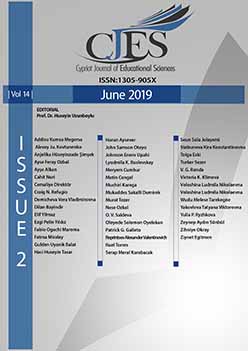Evaluation of the adaptive potential of first-graders with normal speech development and speech disorders
Evaluation of the adaptive potential of first-graders with normal speech development and speech disorders
Author(s): Lyudmila N. Voloshina, Lyudmila K Buslovskaya, Alexey Ju. Kovtunenko, Victoria К. Klimova, Yulia P. RyzhkovaSubject(s): Education, Inclusive Education / Inclusion
Published by: Birlesik Dunya Yenilik Arastirma ve Yayincilik Merkezi
Keywords: adaptative potential; physical activity; misadaptation; health; stress; body functionality; inclusive education; speech disorders; elementary school;
Summary/Abstract: The modern Russian school is focused on the active socialization and individualization of children with disabilities. Inclusive education determines the possibility of teaching children with disabilities varying severity in the conditions of primary general education, outside correctional classes. This situation dictates the need to study and assess the adaptation of children with disabilities to learning in a new social role - the role of the student. Psychophysiological adaptation is an important condition for the preservation and strengthening of students' health. Accordingly, the control of the adaptation processes of the body, the state of health, the level and harmony of physical development is a prerequisite for the development of a system for diagnosing and correcting maladaptive states. The objective of our research was to evaluate and compare the results of the study of physical development, somatic health, and adaptive capabilities of younger students with normal speech development and speech disorders during entering the school. The physical development of students was assessed using the somatometric, somatoscopic, and physiometric methods. The adaptive potential of the body was measured by R.M. Baevsky's method. Somatic health levels were determined by Apanasenko's method. Speech development was evaluated according to the test method for diagnosing oral speech by Fotekova, attitude to school and emotional background - by Orekhova's test. Based on the analysis of the results of this examination, the students were divided into 2 groups: #1 - with normal speech development, #2 - with speech disorder. It was established that physical development in 67% of younger schoolchildren with normal speech development and 75% with speech disorders is either disharmonious or sharply disharmonious. Somatic health levels in 73% of primary school students are low, 21% are below average, the process of adaptation of children to new living conditions is characterized by the stress of physiological mechanisms and is often carried out at the expense of functional reserves, which is especially typical of children with speech disorders. Disproportionate physical development, low level of somatic health and unfavorable adaptation are caused, apparently, by a number of factors, the first of which is the lack of physical activity of children..
Journal: Kıbrıslı Eğitim Bilimleri Dergisi
- Issue Year: 14/2019
- Issue No: 2
- Page Range: 345-351
- Page Count: 7
- Language: English

